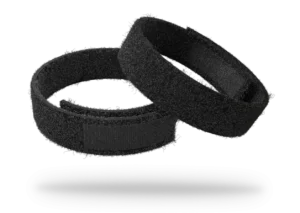
As e-commerce continues to evolve in the mobile-first era, customers increasingly demand personalized experiences and seamless functionality. For store owners using PrestaShop, one feature that can deliver enhanced customization and streamline operations is the prestashop upload file feature. This functionality allows customers to upload files directly while shopping—typically during product selection or checkout—making it ideal for stores offering custom products or requiring document submissions.
From a technical standpoint, it’s a flexible feature that improves the user experience on all devices, especially mobile. This guide explains what the PrestaShop upload file feature is, its real-world applications, and how to configure it properly in your store.
Understanding the PrestaShop Upload File Feature
The PrestaShop upload file feature enables customers to submit files—such as images, documents, or artwork—during the purchase process. It is commonly used in scenarios like:
-
Uploading logos for custom T-shirts
-
Submitting prescriptions for online pharmacies
-
Attaching photos for product customization
-
Providing documents for legal or educational services
While PrestaShop doesn’t include this functionality by default, you can easily integrate it using modules from the PrestaShop Addons Marketplace. These modules vary in capabilities, but most offer similar core features: file upload fields on product pages or at checkout, support for different file types, and mobile-friendly design.
Why File Uploads Matter in a Mobile-First E-Commerce World
The shift toward mobile-first design has changed how users interact with online stores. Today’s shoppers expect to complete entire purchases from their smartphones, including complex actions like uploading images or PDFs.
With the right module, the PrestaShop upload feature:
-
Supports real-time image upload from mobile galleries or cameras.
-
Allows cloud service integration (Google Drive, Dropbox, etc.).
-
Maintains a responsive layout for smaller screen sizes.
-
Provides simple buttons and prompts optimized for touch input.
Ensuring the upload feature works smoothly on mobile helps reduce cart abandonment and improves overall user satisfaction.
Key Use Cases for the Upload Feature
Before diving into the configuration process, it’s helpful to understand the range of industries that can benefit from this functionality:
-
Print-on-demand businesses (e.g., apparel, mugs, posters)
-
Photo printing services
-
Legal or consultancy services
-
Medical and wellness platforms
-
Gift customization and engraving stores
-
Repair service requests with image submissions
These use cases show how versatile and valuable the upload file option can be for modern e-commerce.
How to Configure the Upload File Feature in PrestaShop
Step 1: Choose a File Upload Module
Search the PrestaShop Addons Marketplace for file upload modules. Popular ones include:
-
“Product File Upload”
-
“Custom File Upload”
-
“Customer File Attachment Pro”
Look for a module that:
-
Is responsive and mobile-friendly
-
Supports multiple file types (JPG, PNG, PDF, DOCX, etc.)
-
Allows file size limits and preview functionality
-
Integrates easily with your theme and checkout flow
Download the module ZIP file to begin installation.
Step 2: Install the Module
To install:
-
Go to your PrestaShop back office.
-
Navigate to Modules > Module Manager.
-
Click Upload a Module, and select the ZIP file you downloaded.
-
Click Install, then follow the prompts to complete activation.
Once installed, the module will usually appear in your sidebar or under “Modules > Installed Modules.”
Step 3: Configure Basic Settings
In the module’s settings panel, you can configure the following:
-
File Input Placement: Choose whether customers upload files on the product page, cart page, or checkout.
-
Allowed File Types: Set permitted formats such as
.jpg,.png,.pdf, or.docx. -
Maximum File Size: Specify upload limits (e.g., 5MB) to prevent server strain.
-
Required Uploads: Make file submission mandatory or optional based on product type.
-
Display Settings: Customize labels, buttons, and instructions for mobile and desktop users.
Use short, clear instructions, and test all input fields for mobile responsiveness.
Step 4: Enable Per-Product Uploads (Optional)
Many modules allow you to enable file uploads on specific products. For example:
-
Enable uploads only for “Custom T-Shirt” products.
-
Disable for standard, non-personalized items.
This helps prevent confusion and reduces server clutter.
Step 5: Test on Mobile Devices
Since many users will access your store on their phones, thoroughly test the feature by:
-
Uploading an image from your mobile gallery.
-
Taking a photo using the camera app and uploading it.
-
Submitting a document using mobile cloud services.
Verify that the upload field adjusts to screen size, buttons are tappable, and feedback messages (e.g., “Upload successful”) are visible and readable.
Step 6: Handle Uploaded Files in the Back Office
After customers complete their purchase, uploaded files are stored with their order. In your back office:
-
View uploaded files under Orders > Order Details.
-
Download the file for printing, processing, or review.
-
Validate file size and type to ensure order accuracy.
Some modules also allow automatic file previews or integration with external systems for better workflow.
Tips for Optimizing File Uploads
To ensure efficiency and customer satisfaction:
-
Use descriptive labels (e.g., “Upload your design here”).
-
Provide visual cues like icons or upload status bars.
-
Compress images to reduce load time without affecting quality.
-
Offer error messages for incorrect file types or sizes.
-
Mention upload instructions clearly in product descriptions.
A well-thought-out upload experience ensures users understand the process—especially those on mobile who rely heavily on simplicity and speed.
Conclusion
The prestashop upload file feature is a powerful tool that brings flexibility, personalization, and professionalism to your online store. Whether your customers are uploading artwork, documents, or instructions, the feature simplifies communication and helps fulfill custom orders accurately.
In today’s mobile-first landscape, configuring this option to work flawlessly across devices is crucial. With the right module and setup, your PrestaShop store can offer a superior experience that meets modern customer expectations—and supports your business growth.





